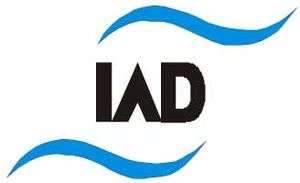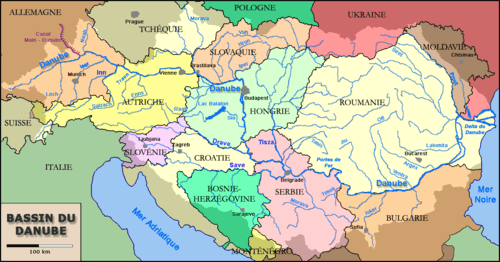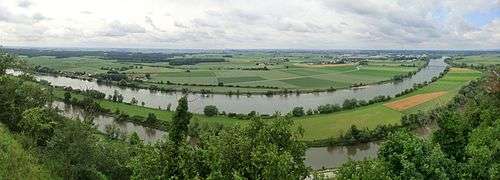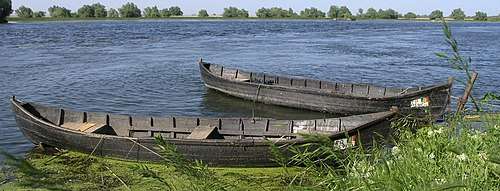International Association for Danube Research

The International Association for Danube Research, or IAD, is the oldest NGO of an active network of scientists in the Danube River Basin of Europe[1].

Organization
The board of the IAD is composed of the president, vice-president and general secretary[2], forming the presidium, and currently 12 representatives of member countries. Since 2017 Cristina Sandu is the president and Thomas Hein[3] from BOKU Wien and Wassercluster Lunz the vice-president. Since 2018 Katrin Teubner (PD) from Universität Wien is the general secretary. The names of the country representatives and the expert group leaders can be found at the homepage of the IAD[2].
IAD has Expert Groups in 12 topics covering major ecological and management fields: Water Quality, Biotic Processes, Microbiology, Phytoplankton & Phytobenthos, Macrophytes, Floodplain Ecology, LTSER & Environmental History, Fish Biology & Fishery, Invasive Alien Species, Ecotoxicology, Delta/Fore-Delta, and Sustainable Development & Public Participation[2][4].
Since 1998, IAD has a permanent observer status at the International Commission for the Protection of the Danube River (ICPDR). IAD members are active in the following ICPDR expert groups[5]:
- Expert Group on River Basin Management
- Expert Group on Flood protection
- Hydropower Expert Group
- Climate Change Adaptation Expert Group
- Public Participation Expert Group.

_River_Panorama_near_Vienna.jpg)



History
The IAD was founded by Reinhold Liepolt (Hydrologist, Diplom-Engineer, Univ-Prof. Hofrat, 1906-1996) in Vienna (Austria) in 1956 under the auspices of the International Society of Limnology (SIL), and since 2003 it is a registered association (Verein) under Austrian law. In 2010, IAD terminated the affiliation to SIL.
It was Liepolt’s wish to join people concerned with the Danube River from the source in Germany to the mouth in Romania. He invited scientific national representatives from all countries of the Danube Region for collaboration. In case of Eastern Europe, he sent official invitation letters to those colleagues who lived "behind the iron curtain". Thanks to him a face-to-face collaboration has been initiated on the various aspects of ecology and river use of the Danube. In a more recent branch of IAD in Austria, the ÖK (Österreichisches Komitee), scientists with outstanding research related to the Danube Basin in Austria are awarded with the “Liepolt-Preis”.
The major achievement in the first decade of IAD was the monograph “Limnologie der Donau” (Limnology of the Danube), edited by Liepolt and published by E. Schweizerbart’sche Verlagsbuchhandlung (Nägele & Obermiller) Stuttgart in 1967[6]. In 1986, S. Godeanu and V. Popescu-Marinescu published the bibliography “Limnologie der Donau” (Limnology of the Danube)[7]. Unfortunately, an update could not be realized, but was substituted by the Danube chapter in the book “Rivers of Europe”, edited by K. Tockner, C.T. Robinson and U. Uehlinger (Elsevier 2009)[8]. Other specific IAD publications encompass the four volumes of the book series “Ergebnisse der Donauforschung” (Results of Danube Research) about water quality and plankton/benthos, quoted in Vol.1: IAD 1990[9], Vol.2: Weber 1993[10], Vol.3: Schmid 1994[11] and Vol.4: Kusel-Fetzmann et al. 1998[12]. In 2003, G.A. Janauer et al. edited a special volume of Arch Hydrobiol, Suppl. Large Rivers about “Macrophyte inventory of the River Danube: a pilot study”[13]. The Danube water quality maps by R. Schmid in 1995 and 2002, based on benthos investigations, were the predecessor of ICPDR water pollution policy.
After the big political changes in 1989/1990 the IAD had to adapt its scientific strategy. The decadal programs and Danube ship surveys were abandoned, and the political water management issues were taken by the emerging ICPDR. In 2001, the following IAD research topics were selected as highest priority: Sturgeon Conservation, Macrophytes as Bioindicators, Microbial Ecology, Danube Water Quality mapping/GIS, and Ecotoxicology (Biomonitoring). In the following years, new priority areas were added, such as Hydromorphology (floodplain ecology) and the potential threat of Invasive Species to biodiversity. Accordingly, some books have been published by IAD representatives and IAD members concerning these recent issues: (1) the atlas about invasive species edited by T. Trichkova et al 2017[14], (2) the vegetation survey of the whole Danube River and its main tributaries edited by G.A. Janauer et al 2018[15], (3) the management guide towards a sustainable future of riverine ecosystem which refers mainly to studies on the Danube River System edited by S. Schmutz and J. Sendzimir 2018[16] and (4) the assessment of restoration and sustainable management for an urban oxbow of the Danube River (Alte Donau, Vienna) over more than two decades edited by M.T. Dokulil, K. Donabaum and K. Teubner 2018[17].
The history is well described for subsequent IAD-periods by people from different IAD-countries in 1986/87[18][19], 1995[20], 2006[21] and 2009[22].
The following presidents took responsibility of IAD: Prof. Dr. Reinhard Liepolt (AT, 1956-1980), Dr. Doz. Imrich Daubner (ČSSR, 1980-1992), Dr. Bodo Wachs (DE, 1992-1998), Dr. Jürg Bloesch (CH, 1998-2004), PD Dr. Ivana Teodorović (RS, 2004-2010), Prof. Dr. Thomas Hein (AT, 2010-2016), and Dr. Cristina Sandu (RO, since 2016). They were supported by the following General Secretaries: Dr. Edmund Weber (AT, 1978-1992), Dr. Herta Heger (AT, 1992-2000), Dr. Meinhard Breiling (AT 2000-2006), Dr. Harald Kutzenberger (AT, 2006-2016), Prof. Dr. Doru Banaduc (RO, 2016-2018), and PD Dr. Katrin Teubner (DE, since 2018).
Current activities
The association is active in promoting ideas exchange and mobility between scientists to foster cooperation and knowledge transfer. In terms of scientific issues, since the 1950s major water management and environmental issues have been key priorities on the agenda of IAD, and science-based solutions are discussed and proposed.
Based on a Danube river basin management plan provided by the ICPDR, IAD established to be a strong science-based partner in different critical issues at river basin scale, such as sustainable development of navigation using the large rivers as waterways across Europe, future development of hydropower and functional fish passes to ensure the river continuum, flood protection and floodplain ecology, species conservation & biodiversity and its potential threats by invasive species and various forms of water pollution (e.g. nutrients, organic and toxic substances), and new model approaches for sustainable management solutions in multiple used aquatic environments. Detailed reports and joint statements can be found on the IAD homepage[1].
IAD members have been participating in the discussion and development of the “Guiding principles on sustainable hydropower development in the Danube Basin” and made major contributions related to the classification of sensitive ecological areas.
IAD members are active in the Danube Sturgeon Task Force[23][24] and also are involved in a number of EU and its "EU Strategy for the Danube Region (EUSDR)" project initiatives[25]. The DSTF aims to coordinate and foster the conservation of native sturgeon species in the Danube River Basin and the adjacent Black Sea by the implementation of the Sturgeon Action Plan adopted under the Bern Convention in 2005[26]. IAD participates at the basin wide Danube Day, on 29 June, organized by ICPDR since 2004.
IAD publishes the Danube News twice a year[27]. The editors of this IAD bulletin are Gertrud Haidvogl[28] (BOKU Wien) and Bernd Cyffka[29] (Aueninstitut Neuburg a.d. Donau,Katholische Universität Eichstätt-Ingolstadt).
IAD Conferences
Every second year an international IAD Conference is organized. A full list of conferences can be found at the IAD homepage [30]. Special issues about the IAD conference of the 50th Anniversary in Vienna-Klosterneuburg 2006 and the 38th IAD conference in Dresden 2010 were published in the international journal River Systems[31]. The Conference Proceedings and IAD books are hosted by, and can be gathered at the Academic Library of Biology at the University Vienna (Fachbereichsbibliothek Biologie[32] an der Universität Wien).
See also
- Danube river topics
- Danube basin topics
References
- 1 2 IAD | International Association for Danube Research—IAD
- 1 2 3 IAD | Structure
- ↑ Thomas Hein | Profil at researchgate
- ↑ IAD | Structure - IAD Expert Groups
- ↑ IAD | Research projects
- ↑ Liepolt R 1967. Die Limnologie der Donau. Eine monographische Darstellung im Auftrage der Arbeitsgemeinschaft Donauforschung der Societas Internationalis Limnologiae (Limnology of the Danube. A monograph) Schweizerbart, Stuttgart
- ↑ Godeanu S, Popescu-Marinescu V (eds) (1986) Limnologie der Donau (Bibliographie), 2, IAD
- ↑ Tockner K, Uehlinger U, Robinson CT 2009. Rivers of Europe. Academic Press
- ↑ IAD (ed) 1990. Ergebnisse der Internationalen Donau-Expedition 1988 (Results of the 1988 River Danube Expedition). Ergebnisse der Donau-Forschung, Vol1, IAD
- ↑ Weber E 1993. Wasserbeschaffenheit der Donau von Passau bis zu ihrer Mündung. (Water quality of the River Danube from Passau to its mouth.) Ergebnisse der Donau-Forschung, Vol2, IAD
- ↑ Schmid R 1994. Limnologie und Gewässergütezustand der bayerischen Donau und ihrer wichtigsten Zubringer. Donaubasisuntersuchung 1985–1992 (The limnology and quality state of the River Danube and its main tributaries in Bavaria. Basic Danube investigation 1985–1992). Ergebnisse der Donau-Forschung, Vol3, IAD
- ↑ Kusel-Fetzmann E, Naidenow W, Russev B 1998. Plankton und Benthos der Donau (The plankton and benthos of the Danube). Ergebnisse der Donau-Forschung, Vol4, IAD
- ↑ Janauer GA, Hale P, Sweeting R (eds) 2003. Macrophyte inventory of the River Danube: a pilot study. Arch Hydrobiol Suppl Large Rivers 14
- ↑ Trichkova T, Vladimirov V, Tomov P, Todorov (eds) 2017. АТЛАС на инвазивните чужди видове от значение за Европейския съюз (In Bulgarian, Atlas of invasive alien species of importance to the European Union), ИБЕИ-БАН
- ↑ Janauer GA, Gaberščik A, Květ J, Germ M, Exler N (eds) 2018. Macrophytes of the River Danube Basin. Nakladatelství Academia
- ↑ Schmutz S, Sendzimir J (eds) 2018. Riverine ecosystem management: Science for governing towards a sustainable future. Springer
- ↑ Dokulil MT, Donabaum K, Teubner K (eds) 2018. The Alte Donau: Successful restoration and sustainable management - An ecosystem case study of a shallow urban lake. Springer
- ↑ Kothé P 1986. 30 Jahre gewässerkundliche Gemeinschaftsforschung der Donauländer, Der Donauraum, 28
- ↑ Daubner I 1987. Die Internationale Arbeitsgemeinschaft Donauforschung. WasserAbwasser, 31
- ↑ Berczik Á 1995. Die Entstehung und Entfaltung der Donauforschung in Ungarn. Opuscula Zoologica (Budapest) 27
- ↑ Teodorovic I, Bloesch J 2006. IAD’s 50th Anniversary: Re-defining the scientific profile
- ↑ Bloesch J 2009. The International Association for Danube Research (IAD)—portrait of a transboundary scientific NGO. ESPR, 16
- ↑ Danube Sturgeon Task Force
- ↑ Sturgeon 2020 | Sandu C, Reinartz R, Bloesch J (eds) 2013. “Sturgeon 2020”: A program for the protection and rehabilitation of Danube sturgeons. Danube Sturgeon Task Force (DSTF) & EU Strategy for the Danube River (EUSDR) Priority Area (PA) 6 – Biodiversity
- ↑ EU Strategy for the Danube Region (EUSDR)
- ↑ Sturgeon Action Plan | Bloesch J, Jones T, Reinartz R, Striebel B 2006. An action plan for the conservation of sturgeons (Acipenseridae) in the Danube River Basin. Österreichische Wasser- u Abfallwirtschaft, 58
- ↑ IAD bulletin | Danube News
- ↑ Gertrud Haidvogl | Profil at BOKU
- ↑ Bernd Cyffka | Aueninstitut a.d. Donau, Angewandte Physische Geographie
- ↑ IAD | conferences
- ↑ River Systems | Special issues 50th IAD Anniversary 2006 & 38th IAD conference 2010
- ↑ Universität Wien |Biology Library